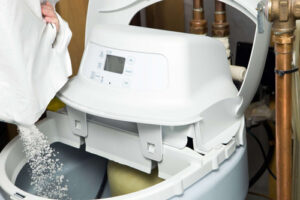
Many people are rightly worried about the drinking water coming straight out of their taps. Unfortunately, much of the United States has an aging water pipe system that is in desperate need of repair and replacement. Often, water is leaving the water processing plant clean but arrives at your home filled with contaminants, including lead, iron, and hexavalent chromium.
In Prince George’s County and Montgomery County, city tap water is often provided by the Washington Suburban Sanitary Commission (WSSC). The Commission, meanwhile, operates drinking water filtration plants in Patuxent and the Potomac. The WSSC also manages roughly 10,000 miles of water and sewer lines.
Usually, water leaves the WSSC’s drinking water filtration plants clean. However, over the course of the many miles the water must often travel, it can become contaminated. Let’s look at why contamination occurs and also what contaminants might be making their way into your drinking water.
Metals From Old Pipes Could Be Seeping Into Your Water
Over time, old pipes often begin to break down. As a result, heavy metals and other contaminants can be leached into tap water. Many of these contaminants are extremely dangerous and could be harmful to your health. Children are especially vulnerable to the health effects of contaminated water.
Perhaps the most infamous example of this is the still on-going lead crisis in Flint, Michigan. The local water authority failed to utilize orthophosphate, which is used to control metal corrosion. As a result, the metal in the pipes began to break down, leaching lead into the water.
While Maryland has not been hit by a lead poisoning scandal, lead remains a threat. Of the roughly 143,000 Maryland children tested for lead levels in 2017, more than 2,000 were found to have lead levels in excess of 5 micrograms of lead per deciliter of blood. It appears that paint and other sources were the culprits in many cases. However, some towns in Maryland do have aging lead service lines.
Besides lead, other metals, including iron and chromium, could be leaching or leaking into your water.
Burst or Damaged Pipes Could Let Contaminates In
Even if pipes are not leaching heavy metals into drinking water, contaminants may still be making their way in through damaged or burst pipes. Unfortunately, burst pipes are a serious threat for residents in Prince George’s and Montgomery County.
That’s because the Washington Suburban Sanitary Commission’s pipeline system contains more concrete mains than any city save Detroit. Unfortunately, these outdated concrete mains are more prone to bursting and leaking. Further, the WSSC purchased many of its mains in the 1970s and 1980s from a now-defunct New Jersey company that was infamous for supplying subpar mains.
Ultimately, the WSSC’s inventory of concrete pipes is two to three times higher than many other US cities. Since 1996, nine of the WSSC’s mains have blown. If a main blows or is damaged, it could result in contaminated water.
House Pipes Are a Threat Too
Finally, even if water is reaching your house in pristine condition, the pipes inside your home could be leaching heavy metals or leaking. This too could result in contamination. Many older homes used lead pipes, which could result in lead poisoning. So if you have an older home, you should get it tested immediately.
Even if your home is newer, it’s smart to test your drinking water. Contaminated water could make you ill, stunt development, and cause other issues. Want to test your home drinking water? Contact Hague Quality Water of Maryland today!
Call us or request a FREE WATER TEST today!




